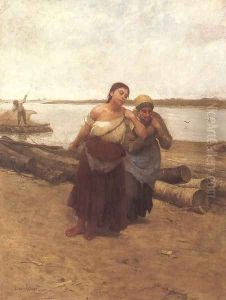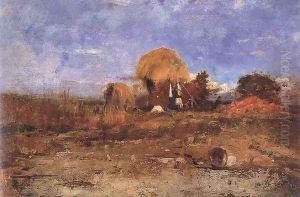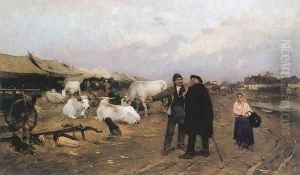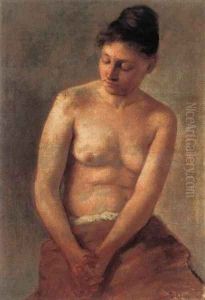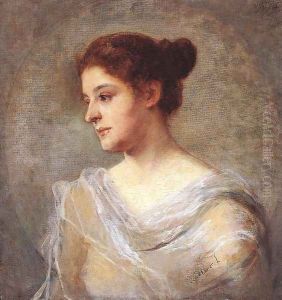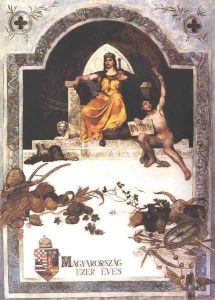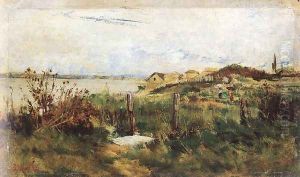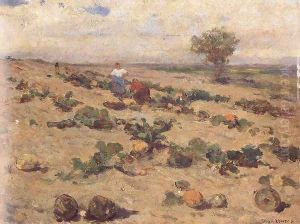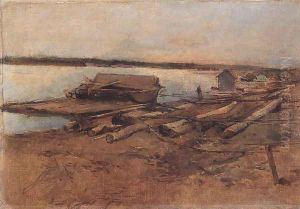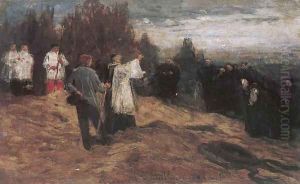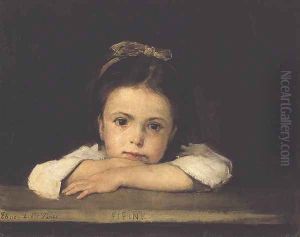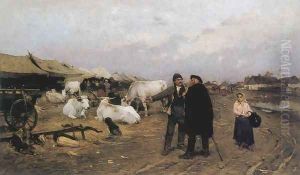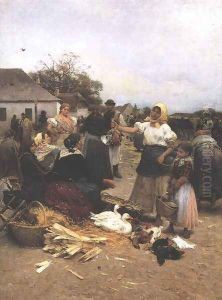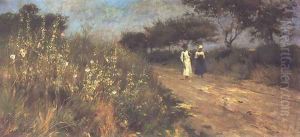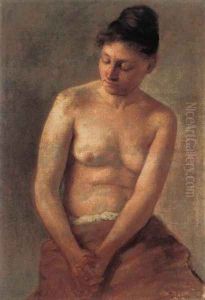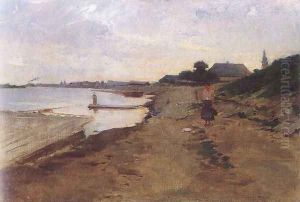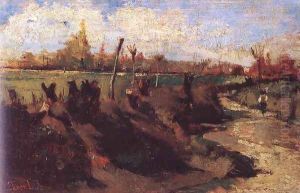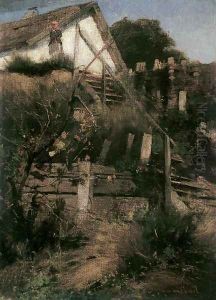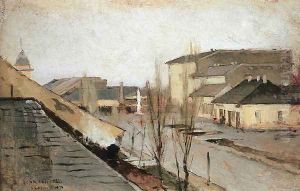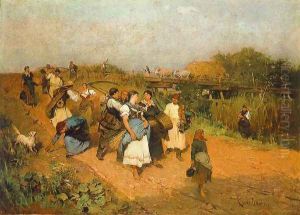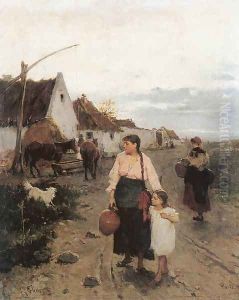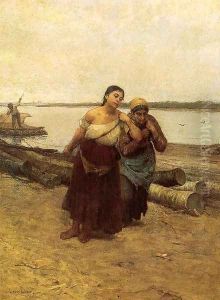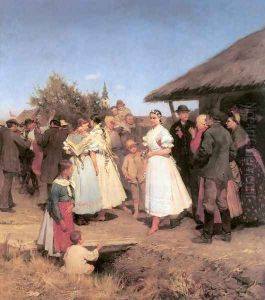Lajos Deak-Ebner Paintings
Lajos Deak-Ebner was a Hungarian realist painter known for his detailed and vivid depictions of everyday rural life in Hungary during the late 19th and early 20th centuries. Born on October 19, 1850, in Budapest, Hungary, Deak-Ebner began his artistic education at the Hungarian Academy of Fine Arts, where he studied under the tutelage of renowned artists such as Miklós Barabás and Károly Lotz.
During his formative years, Deak-Ebner was greatly influenced by the works of the Barbizon School, a group of French painters who emphasized realistic and naturalistic portrayals of the landscape and peasant life. This influence is evident in Deak-Ebner's choice of subjects, which often included scenes of agricultural labor, rural landscapes, and genre scenes depicting the daily lives of Hungarian peasants.
Deak-Ebner's work was characterized by a meticulous attention to detail and a rich, earthy palette, which he used to capture the nuances of the Hungarian countryside and its inhabitants. He was also known for his skillful use of light and shadow, which added depth and realism to his paintings.
Throughout his career, Deak-Ebner exhibited his work in numerous exhibitions and won several awards. His paintings were well-received by critics and collectors alike, and he secured a place among the most prominent Hungarian realist painters of his time.
Lajos Deak-Ebner's legacy continues to be felt in the realm of Hungarian art, and his works are held in high regard as valuable cultural artifacts that provide insight into the rural life of Hungary in a bygone era. He passed away on December 18, 1934, in Budapest, leaving behind a substantial body of work that continues to be studied and admired by art historians and enthusiasts around the world.
